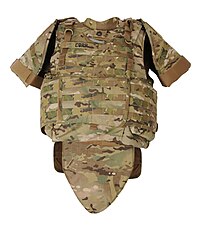
Photo from wikipedia
Abstract The artificial replacement of hip joints comes into play when an individual is affected by different types of arthritis or sudden trauma. Hip prosthesis involves the usage of ultra-high-molecular-weight… Click to show full abstract
Abstract The artificial replacement of hip joints comes into play when an individual is affected by different types of arthritis or sudden trauma. Hip prosthesis involves the usage of ultra-high-molecular-weight polyethylene (UHMWPE) as an acetabular element. The articulating surfaces of the joint are governed by different lubrication regimes such as boundary or mixed lubrication in which micro-wear debris is generated in the course of time, eventually leading to osteolysis. Present study attempts to design appropriate composite material for acetabular cups in hip joints using machine learning and evolutionary algorithm. Artificial neural network (ANN) was employed to develop models for UHMWPE composites with multiple nano and micro reinforcements mapping the mechanical and wear resistance of UHMWPE acetabular cup. Published experimental reports of UHMWPE composites with MWCNT, graphene and carbon fiber (CF) were used as a database to develop the ANN models for both mechanical and tribological properties. The models were used as objective optimization functions using genetic algorithm (GA) in single and multi-objective fashions for building composites with enhanced performance. The present materials informatics approach provides some convincing clues for experimental trials.
Journal Title: Composite Structures
Year Published: 2021
Link to full text (if available)
Share on Social Media: Sign Up to like & get
recommendations!